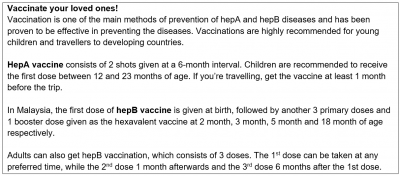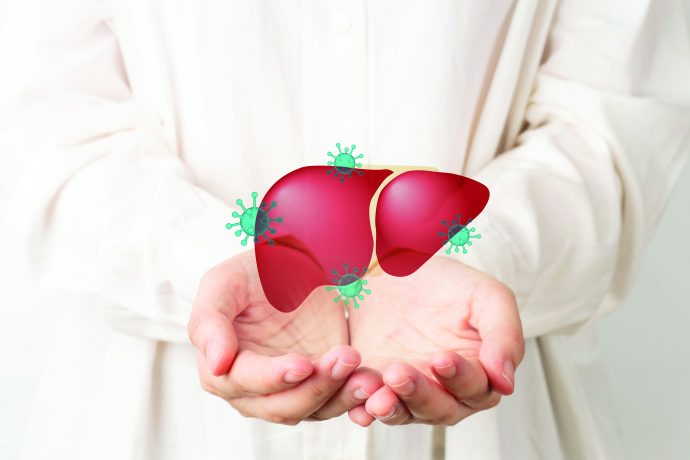Entering the year 2022, there have been recent surges of acute hepatitis infection in children due to unidentified causes. Although the causes have not been identified, hepatitis is typically caused by a particular hepatitis virus. Are you sufficiently informed to keep your family and yourself safe?
Our liver is a vital internal organ responsible for many of our bodily processes including filtration, digestion, metabolism of fat, detoxification of drugs and alcohol, protein synthesis and the storage of vitamins and minerals. Without our liver, our daily lives would be heavily affected, and acute liver failure often causes complications such as cerebral oedema (excessive fluid in the brain), bleeding disorders, infections, and kidney failures.
Hepatitis is one of the many diseases which affect the liver. It can be caused by both infectious virus and non-infectious agents, and lead to inflammation in the liver. Hepatitis has many different strains (types), and it can be fatal to the host if the disease is severe, but rest assured as prevention and treatment are available for the different strains.
Symptoms and types

There are many different types or strains of the hepatitis virus, ranging from hepatitis A to hepatitis E. All variants of the disease primarily target the liver and its functions, ultimately leading to other liver diseases and potentially liver failure or cancer.
Strains of hepatitis vary in terms of mode of transmission, severity of illness, geographical distribution, and prevention/treatment methods. As such, some people are more susceptible to specific forms of the virus compared to others. For example, hepatitis A can be caused by poor hygiene when handling food and is much more prevalent in developing countries where access to proper sanitisation is limited.
As all variants of hepatitis primarily affect the liver, the major symptoms of the diseases are usually the same, including:
- Jaundice
- Abdominal pain and swelling
- Swelling in the legs and ankles
- Itchy skin
- Dark urine colour
- Pale stool colour
- Chronic fatigue
- Nausea or vomiting
- Loss of appetite
- Easily bruised
Hepatitis A (hepA) is very contagious and common in developing countries with poor sanitisation and limited access to clean water. It is spread by ingestion of the virus (via contaminated food and water) and faecal transmission. One of the methods to prevent hepA infection is through vaccination. Besides vaccines, practicing good hygiene, especially before eating and drinking is also a good measure to prevent hepA infection.
Hepatitis B (hepB) is a progenitor for other chronic diseases and is the major cause of liver cancer. Like hepA, it is also caused by person-to-person transmission, but via exchange of bodily fluids (sex or blood-to-blood contact) instead. Most people tend to acquire the disease at birth. HepB vaccination is included in Malaysian childhood immunisation schedule. Treatments for the disease include antiviral treatments which prevent liver damage and cancer.
Hepatitis C (hepC) is a precursor for chronic diseases and the major cause of liver cancer and transplants. Today, most people become infected with hepC by sharing needles or other equipment used to prepare and inject drugs. There is no hepC vaccine, so the best way to prevent hepC is by avoiding behaviours that can spread the disease, especially injecting drugs. Screening for hepC is key because treatments can cure most people with hepC in 12 to 24 weeks.
Hepatitis D is a satellite disease which can only affect people who have contracted hepatitis B. There is no available vaccine, but there are medications. Meanwhile, hepatitis E is similar to hepA, where the disease is spread by ingestion of virus via contaminated food and water. There is currently no worldwide vaccination available.







Comments